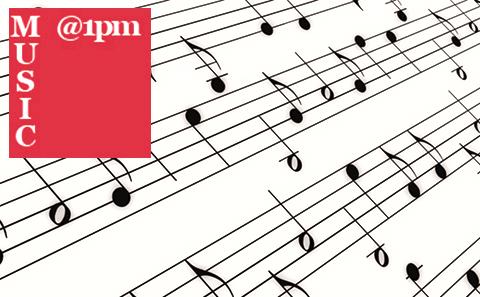Dr. Tanya Ekanayaka Event

- Time:
- 13:00 - 14:00
- Date:
- 18 April 2016
- Venue:
- Turner Sims Highfield Campus Southampton SO17 1BJ
For more information regarding this event, please telephone Louise Johnson on 02380598424 or email L.L.Johnson@soton.ac.uk .
Event details
Dr. Tanya Ekanayaka (PhD, MSc, FTCL, LRSM, LGSMD-PPD, BA-Honours) is one of Sri Lanka's foremost, award winning and internationally acclaimed composer-pianists. Classically trained and with a background in popular and South Asian musics, she is also an improviser, musicologist and highly qualified linguist.
Tanya’s debut album titled ‘Reinventions: Rhapsodies for Piano’ comprising her own compositions for solo piano performed by her and which introduces a genre developed by her was launched worldwide by Naxos Records (Grand Piano) in March 2015. Her compositions remain unscored, evolve spontaneously when she is at the piano residing frozen in her memory thereafter.
Often the first Sri Lankan compositions to ever be performed at premiere international concert venues Tanya’s compositions have also been featured on international media such as BBC World Radio and BBC World News Television as part of exclusive interviews.
Based in Edinburgh, Tanya is on the teaching faculty of Edinburgh University where she has taught part-time in both its Departments of Linguistics and Music since 2007.
Since 2012, Tanya has also been developing a pioneering and so far highly successful music composition project on a purely voluntary basis aimed at empowering traumatised as well as underprivileged Sri Lankan children and youth recovering from the civil war which ravaged the nation for over thirty years.
For further details about Dr. Tanya Ekanayaka, please visit: http://tanyaekanayaka.com/ and http://www.naxos.com/person/Tanya_Ekanayaka/232400.htm
Email: info@tanyaekanayaka.com
PROGRAMME
Adahas: Of Wings Of Roots – Tanya Ekanayaka
Dew Encounters: Of Scottish Walks, Vannam & Sri Lanka’s Bugs Bunny – Tanya Ekanayaka
Dhaivaya: Alter(ing) Hue – Tanya Ekanayaka
Vannam (Gajaga, Mayura & Hanuma) & You – Tanya Ekanayaka
In Lotus: Olu Pipila With Moment – Tanya Ekanayaka
2013/14 June Echoes – Tanya Ekanayaka
PROGRAMME NOTES
My compositions develop spontaneously at the keyboard, and often as a whole within just a few minutes. Each composition centres on a motif inspired by the keys or tonal centres of the other works which preceded it in the recital programme in which it was first performed¹, integrated with reinventions of melodies derived from the diverse musical cultures of my homeland.
In particular, the compositions in this album incorporate unconventional blends and interpretations of 10 of the 18 Sri Lankan vannams in addition to a host of reinventions of some of Sri Lanka’s best-known popular, semi-classical and traditional folk music melodies. Vannams are an ancient set of dances imbued with a rich percussive character dating back to the 16th and 17th centuries which developed in the courts of kings.Vannams are secular in character and most depict specific animal movements. The word ‘vannam’ is descended from the Sanskrit ‘varnam’, which translates as ‘descriptive praise’.
Although my compositions are characterised by their relationship to other classical works in the original recital programme, each composition can now be understood as being entirely complete and autonomous. However, considering the defining motif included in each composition it is possible to visualise future performers programming the performance of one of these compositions by combining it with works from any genre—for solo piano or otherwise—that are in the same keys as the composition’s defining motif and which together will generate a sense of overall stylistic and emotional unity.
Adahas: Of Wings Of Roots
Premièred in 2010 at the St Martin-in-the-Fields ‘Pianists of the World’ series, and the first major performance of one of my own compositions, Adahas: Of Wings Of Roots attempts to satisfy two parallel artistic objectives consistent with the genre presented in this album. It evokes the three works which preceded it when it was premièred—J.S. Bach’s Prelude and Fugue in E flat, BWV 852, Beethoven’s Sonata No. 15 in D, Op. 28 and Ravel’s Jeux d’eau—by use of a recurring and ‘dissonant’ nucleus formed by their three respective tonal centres. It reflects my own native musical heritage, through the incorporation of two traditional Sri Lankan melodies including a well-known kavi melody (kavi being a genre of sung verse), and a nursery rhyme called Tikiri Liya.
‘Adahas’ meaning ‘thoughts’ is a word belonging to one of Sri Lanka’s languages, Sinhala. ‘Roots’ represents the dichotomous sources of the composition stemming from both the content of the programme and my indigenous musical background. ‘Wings’ stands as a metaphor for the almost kaleidoscopic identity of this work resulting from the appropriation and amalgamation of its diverse musical sources.
Dew Encounters: Of Scottish Walks, Vannam & Sri Lanka’s Bugs Bunny
This work evolved in its entirety one evening in Edinburgh in 2013. A recurring chromatic motif involving the notes of E flat, E and F as well as transpositions of it intertwines with reinventions of Sri Lankan melodies belonging to two contrasting genres. The source of the motif is the tonal centre of Chopin’s Nocturne in E flat, Op. 55, No. 2, Debussy’s Arabesque No. 1 and the Prelude and Fugue No 18 in F, Op. 87 by Shostakovich. The Sri Lankan melodies echoed in this work are the Udara vannama including appropriations of the Ganapathi, Savula and Sinharaja vannams and the theme melody of the Sri Lankan dubbed version of the Warner Bros. television cartoon Bugs Bunny, one of my favourite cartoons as a child. The four vannams relate to royalty, the Hindu deity, Ganesha, the fowl and the lion, respectively.
Dhaivaya : Alter(ing) Hue
Drawing inspiration from the tonal centres of Beethoven’s Piano Sonata No. 14 in C sharp, Op. 27, No. 2, Rachmaninov’s Prelude in C sharp, Op. 3, No. 2, Tchaikovsky’s August and June from The Seasons, Op. 37b, and Khachaturian’s Toccata, Dhaivaya: Alter(ing) Hue includes modulations on a motif based on C sharp, B, G, and E flat, coupled with an adaptation of and variations on a well-known Sri Lankan hymn tune. The hymn has two titles: Jehovah Thou Hast Promised and Danno Budunge. The first is sung to a Christian text, the second to a Buddhist text. The word ‘dhaivaya’ meaning ‘destiny’ belongs to the Sinhala language. This work evolved in 2011 and was first performed at the John F. Kennedy Center for the Performing Arts, in Washington DC, in 2012.
In Lotus: Olu Pipila With Moment
Reflecting on Chopin’s Ballade No.1 in G, Op. 23, and Debussy’s L’isle joyeuse, In Lotus: Olu Pipila With Moment, derives its central musical motif from the notes G, the tonal centre of the Chopin Ballade and A, a prominent note in L’isle joyeuse which does not evoke a clear tonal centre. Around this is worked a reinvention of one of Sri Lanka’s most popular folk-songs, Olu Pipila (‘Lotus flowers have blossomed’). This composition evolved in full during a single late-evening session in June 2013. It also received its première at a ‘Pianists of the World’ series recital at St Martin-in-the- Fields later that year.
Vannam (Gajaga, Mayura & Hanuma) & You
This composition sets out to link the pieces which preceded it in its original recital setting—Haydn’s Sonata in D, Hob. XVI: 37, and Beethoven’s Bagatelle in A, WoO 59: Für Elise—through a musical motif centred upon the tonal centres of the two works, D and A. The motif and its various transpositions recur throughout the work, in complementary relationship to a reinvention of three famous Sri Lankan vannams—the Gajaga, Mayura and Hanuma—which themselves are linked by similar melodic lines (the note values in each being different). The three vannams relate to the elephant, the peacock, and to Hanuman (the central monkey-god figure in the Indian epic Ramayana), respectively.
Vannam (Gajaga, Mayura & Hanuma) & You evolved in its entirety one afternoon in early February 2013 in Edinburgh, and I first performed it in the ‘Pianists of the World’ series at St Martin-in-the-Fields that same year.
2013/14 June Echoes
A synthesis of two previous compositions, Echoes: with Handapane Valakulakse & June (for solo piano; 2013) and the first movement of Nim-Him & Haar (for piano and cello; 2014), 2013/14 June Echoes evolved in June 2014 and incorporates reinventions of three of Sri Lanka’s most famous popular songs: Handapane, Valakulin Basa, and Nim-Him Sewwa. It also opens with a prominent two-note interval (C sharp and F sharp), which builds into a sequence intertwined with the Sri Lankan melodies and then recurs as part of a recapitulation towards the end of the work. This can be seen as a tangential reflection on Beethoven’s Piano Sonata No. 21 in C, Op. 53 (the ‘Waldstein’—performed in the same recital), each of the two notes being a semitone above the tonal centres of the three movements of the sonata. This work was first performed at St Martin-in-the-Fields, in March 2015.
Copyright Tanya Ekanayaka 2015
